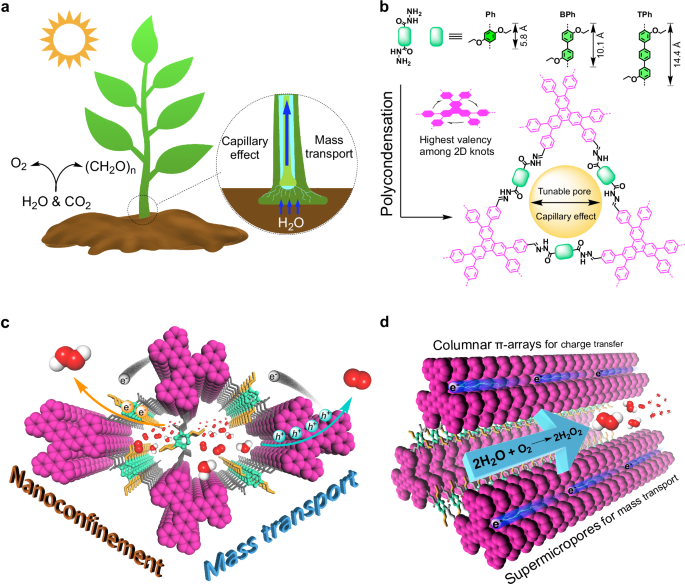Innovative COFs for Efficient Hydrogen Peroxide Production Through Artificial Photosynthesis
Key Ideas
- Artificial photosynthesis aims to mimic natural processes to capture and store solar energy in chemical bonds.
- Traditional photocatalytic materials have limitations like low efficiency and reliance on sacrificial agents.
- This study focuses on designing COFs with precise structures to efficiently produce hydrogen peroxide through artificial photosynthesis using water and air.
- The innovative COFs demonstrate green and efficient photo-to-chemical transformations under ambient conditions.
The article discusses the importance of artificial photosynthesis, inspired by natural photosynthesis, to capture and store solar energy efficiently. It highlights the challenges faced by traditional photocatalytic materials like low efficiency and reliance on sacrificial agents. The study focuses on designing innovative covalent organic frameworks (COFs) with precise structures to enhance charge utilization and water/oxygen activation for efficient production of hydrogen peroxide (H2O2) through artificial photosynthesis using water and air. The research reveals key insights into the photosynthetic process, such as maximizing light-harvesting activity, spatial separation of water oxidation and oxygen reduction centers, nanogrooves for water and oxygen activation, and 1D trigonal supermicropores for timely delivery of water and oxygen to catalytic centers. The COFs enable green and efficient photo-to-chemical transformations, removing organic contaminants from water and degrading them rapidly under visible light. The study showcases the potential for COFs to revolutionize the production of H2O2 through sustainable and energy-efficient means.
Topics
Production
Sustainability
Green Technology
Energy Efficiency
Nanotechnology
Chemical Industry
Photocatalysts
COFs
Artificial Photosynthesis
Latest News
